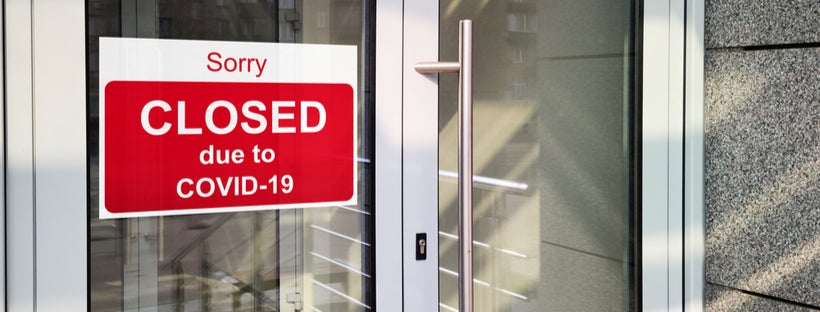The City of Atlanta brought the “Sign Ordinance” to effect in October of 2003. This set of regulations was an amendment to Part 16 of the Code of Ordinances of the 1982 Atlanta Zoning Ordinance. The new regulations were incorporated as Chapter 28A of the Atlanta Zoning Ordinance for sign regulations as the “Sign Ordinance of the City of Atlanta.”
It governs all things related to the erection and placement of signs and banners in Atlanta while ensuring the safety of pedestrians and vehicular traffic and preserving the value of properties where these signs are being installed. If all the legal lingo appears confusing, you’re not alone. We have a no-nonsense guide that tells you as it is.
Signs Requiring Permits

Signs and banners located within the city are subject to the following regulations:
Portable Signs
These are permitted only in districts C-1 through C-5, I-1 and I-2, SPI-1, and SPI-9 for a maximum period of 30 consecutive days in a year.
Billboard Signs
These are permitted only in the I-1 and I-2 industrial districts. Erection of billboard signs is not allowed within 300 feet of a residential property, government building, or historic place or landmark.
The signs must also be spaced out by 500 feet, measured in a straight line from the edge of the sign.
Institutional Signs
These signs are only permitted on institutional property. However, one sign, as long as it does not exceed 35 square feet in area, is permitted
in R-1 through RG and MR residential districts after seeking due permission.
Temporary Signs
Temporary signs are permitted in all zoning districts, subject to the applicable temporary sign regulations for the respective district.
Freestanding Signs
Freestanding signs must be placed 10 or more feet away from the nearest wall of a principal structure. They should not project over the roof of any structure. These cannot exceed a height of 24 feet from ground level.
Building Signature Signs
These signs are permitted only for buildings containing four or more stories, provided that the sign does not extend beyond the top of the building. Only one building signature sign is allowed on any side elevation of a building.
Signs Not Requiring Permits

The following signs do not require any permits, provided that they conform to the City Code:
- Temporary signs
- Yard signs
- Signs that are placed inside a building (subject to terms of the Ordinance)
- Lights and decorations
- Flags
- Parking lot identification signs
- Approved historic markers
- Signs otherwise allowed within public rights-of-way (except those explicitly requiring permits)
Prohibited Signs
The City of Atlanta prohibits the following signs:
- Certain banners and beacons
- Pennants
- String lights that are not permanently mounted to a rigid background
- Inflatable signs
- Balloons
- Roof signs
- Rotating signs
Do’s and Don’ts of Sign Placement

Here is a quick summary of what you should and shouldn’t do with sign placement in the City of Atlanta:
- If you are setting up projecting or suspended signs over public streets or sidewalks, you need to obtain permits that come with the maintenance of liability of insurance, amounting to $1,000,000 per occurrence per sign.
- Signs should not constitute a traffic hazard. Animated, flashing, or changing signs are not permitted along the interstate highway.
- Vinyl banners or cloth fabric banners that are directly or indirectly illuminated must be lit from the top across the sign face in a downward-facing manner.
- No portion of any sign should exceed the top of a building upon which it is installed.
- Installation of a sign does not permit the removal, destruction, pruning, cutting, or topping off the branches, trunk, roots, or any vital portion of a tree, regardless of whether it interferes with the sign.
- Neon lighting is allowed only in some districts. Consult your local authorities before installing it.
- Apart from authorized flags, one flag, not exceeding 60 square feet, can be flown in a single lot in certain districts. These flags are not counted while computing the total area of signs stipulated by the district.
- Signs cannot be located higher than 30 feet from the ground. However, if a building’s ground level is lower than the surrounding sidewalk or pavement, it can be raised 20 feet above this structure.
Obtaining Permits
- First, you need to submit an application for a permit with the Director of your district. These applications must be accompanied by the fees applicable and requisite information, such as location, placement, size, and detailed drawings of the sign (in case of construction, creation, or installation of new signs).
- All applications are permitted or denied within thirty days of their submission. Upon permission, the applicant can proceed with installing the sign at their own risk. However, if the Director is of the opinion that the sign is not in compliance with the City Code, it can be removed.
- The signs are also subject to random inspection; those that do not conform to the guidelines may be taken down, and action will be taken against the applicant.
- The sign permit may lapse upon completion of the stipulated period unless renewed. It may also lapse if any activity on the premises is discontinued for a period of 180 days or longer.


 Posted in
Posted in